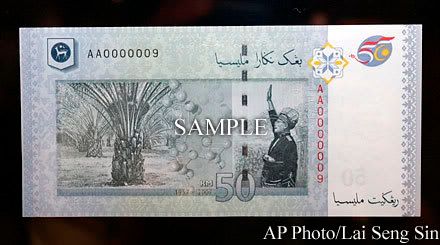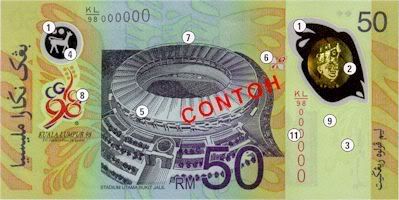Prime Minister Helen Clark says New Zealand officials had to blow the whistle with the Chinese government to get action over contaminated infant formula from a company partly owned by dairy giant Fonterra.
Nineteen people have been detained on suspicion of breaking food safety laws in China after 432 babies became ill with kidney stones from being fed formula containing the toxin melamine, which is found in fertilisers and cleaning products.
Kidney stones are crystallised minerals such as sodium and calcium and the condition is extremely rare in babies. The milk powder is being linked to the death of one infant.
The formula’s producer, San Lu Group, is 43% owned by the New Zealand dairy cooperative.
San Lu has been ordered to stop production of the formula, which it says has only been sold in China. More than 8,000 tonnes of baby formula have been pulled off shop shelves and authorities are checking supplies and companies producing milk powder throughout the country, Chinese officials said.
Miss Clark says she was first briefed about the contamination issue 10 days ago, then convened a meeting with senior ministers and officials.
She told Television New Zealand on Monday that officials were directed to go through the New Zealand ambassador to alert Chinese government ministries.
Miss Clark says New Zealand could not have it on its conscience that the joint venture was manufacturing tainted product. She says Fonterra had been trying for weeks to get a recall of the milk formula, but local authorities had refused.
Miss Clark says once the Chinese government had been alerted, a heavy hand had then descended on those authorities to act.
New Zealand’s Centre for Business Ethics says Fonterra’s reputation could be on the line and it needs to explain how it monitors product quality. The centre says Fonterra now has to prove it is doing everything it can to get new management and monitoring systems in place swiftly.
Green Party MP Sue Kedgely is asking whether Fonterra had rigorously investigated San Lu’s standards.
Fonterra seeking meeting with Chinese govtFonterra, which bought the 43% stake in the San Lu Group in 2005 for $153 million, says it has been advised that San Lu has had a quality issue in its products as a result of receiving defective milk in China. It says it is seeking a meeting with the Chinese government to discuss the contamination.
Fonterra says San Lu the has recalled product and put new milk quality testing procedures in place. It says it understands that the product involved is only sold in China and has pushed for a full product recall since it was advised of the issue in August.
A Fonterra spokesperson says its priority is ensuring that the welfare of consumers is being put first. The company says it is pushing hard to make sure San Lu is working closely with the Chinese government to ensure that everything possible is being done.
Fonterra bought its shareholding in San Lu to help establish a presence in China, which is seen as having huge growth potential as a dairy market.
Farmer shareholders concernedFonterra’s farmer shareholders are concerned about the reputation of their company as a result of a milk contamination scandal in China but say it is confident the co-operative is doing all it can to minimise the damage.
Fonterra has refused to be interviewed by the media but its shareholders’ council says it has been fully briefed on the situation.
Chairman Blue Read says shareholders are concerned that Fonterra’s reputation is at stake. He says shareholders will be watching with interest how Fonterra does handle the situation but says it should not put the co-operative off joint partnerships with overseas companies.
Federated Farmers Dairy section chairman Lachlan McKenzie says he does not believe New Zealand’s reputation as a dairy exporter is at risk because San Lu is a Chinese company of which Fonterra has a minority share.
Investigation widened in ChinaReports of the problem first emerged last Wednesday when 14 babies in Gansu province were said to have become ill. The state-run news agency Xinhua reported on Thursday that other cases had emerged in the provinces of Jiangsu, Shandong, Ningxia, Shaanxi, Anhui and Hunan.
China’s Health Minister Gao Qiang has acknowledged China has to improve its food safety supervision.
Xinhua reports the health ministry as saying an initial investigation had confirmed the tainted milk powder was to blame for the nationwide spate of cases of kidney stones in babies. The ministry alleges San Lu knew in August that the formula was tainted with melamine.
Chinese officials trying to track down the source of melamine in the contaminated formula have widened their investigation to the country’s dairy producing regions.
In Taiwan, authorities have sealed all San Lu milk powder products that have yet to be distributed to retailers, after China’s Taiwan Affairs Office said San Lu had exported 25 tonnes of the milk powder to Taiwan in June.
Products tested in NZ ’safe’New Zealand’s Food Safety Authority is carrying out tests on dairy products from China, and all baby formulas sold in New Zealand, as a precaution.
Authority spokesperson Sandra Daly says customs records show no Chinese milk powder has been imported.
However, she says New Zealand parents may still be concerned so the authority was carrying out testing in order to be able to reassure them.
Ms Daley says preliminary tests on all products have come back negative, meaning they are safe.
 Lim (left in photo), who is also DAP secretary-general, blasted the recent call by Gerakan acting president Koh Tsu Koon (right in photo) to set up a parliamentary select committee to review the ISA, which allows for detention without trial.
Lim (left in photo), who is also DAP secretary-general, blasted the recent call by Gerakan acting president Koh Tsu Koon (right in photo) to set up a parliamentary select committee to review the ISA, which allows for detention without trial. Questioning their sincerity in tackling the issue, Lim challenged leaders of Gerakan and MCA to emulate Umno stalwart Zaid Ibrahim (left) who had resigned as a cabinet minister because of recent use of the law.
Questioning their sincerity in tackling the issue, Lim challenged leaders of Gerakan and MCA to emulate Umno stalwart Zaid Ibrahim (left) who had resigned as a cabinet minister because of recent use of the law. He was asked to comment on a similar move by the Selangor government which, like Penang, is helmed by the opposition Pakatan Rakyat coalition.
He was asked to comment on a similar move by the Selangor government which, like Penang, is helmed by the opposition Pakatan Rakyat coalition.










